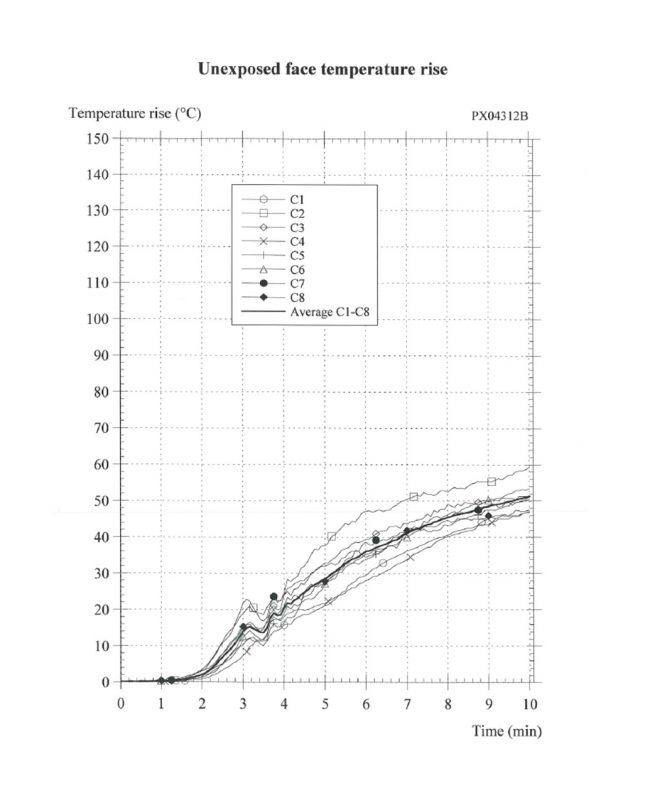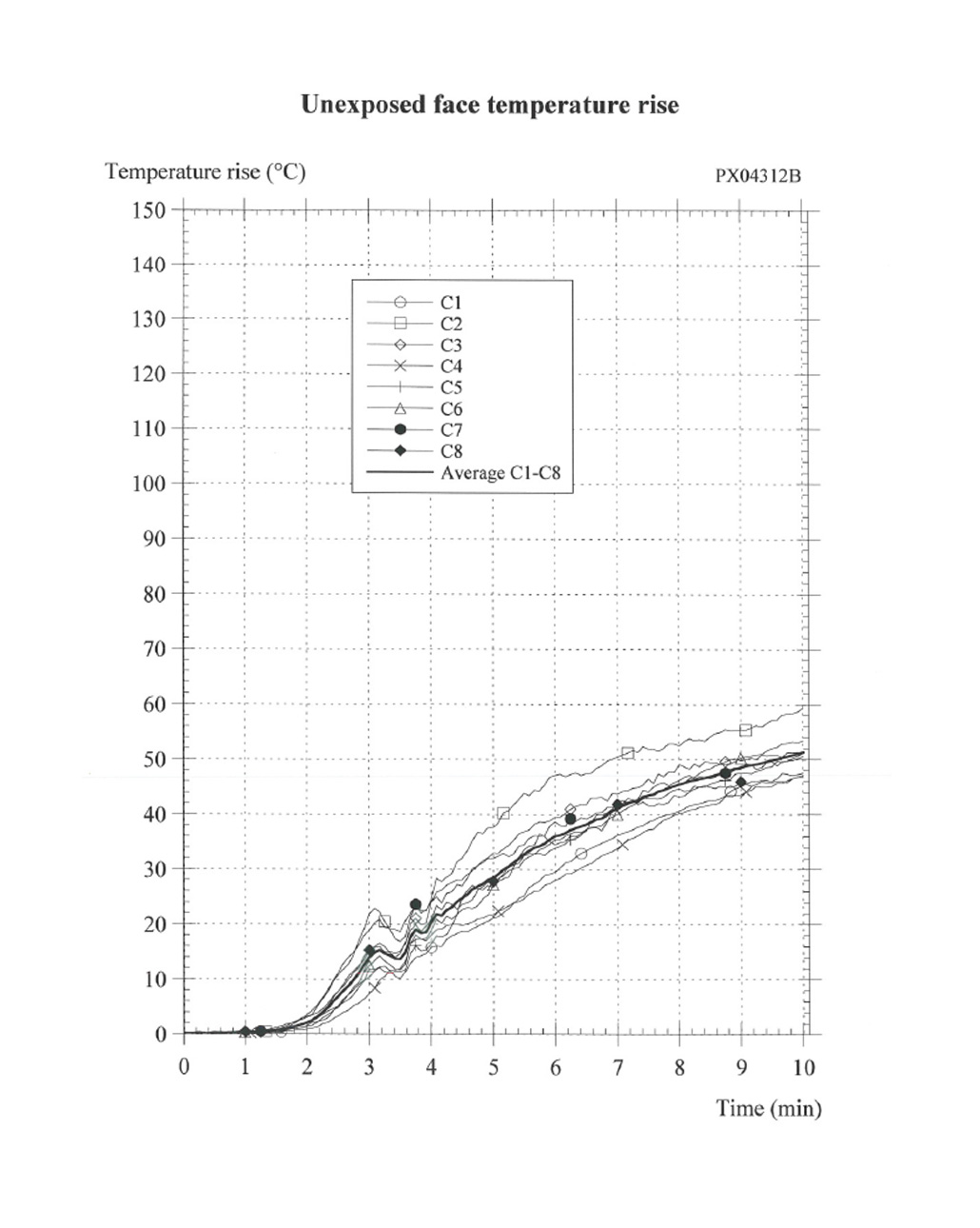

What is Resistance to Fire?
Resistance to Fire measures the ability of a building material to protect the sub-construction, preventing the building material it-self from falling down during the evacuation of the building. The test results are expressed in how many minutes the structural element resists the fire before the threshold for each test criterion is exceeded. Interior wall and ceiling claddings, roofs, floors and even construction systems, including ventilation ducts and pipes, must be classified based on their fire resistance. Fire properties are tested in a full-scale furnace using a standard fire curve for temperature/chronological development.
Resistance to Fire classifications According to European Standard EN 13501-2
| CLASS | TEST CONDITIONS | REQUIERED FUNCTIONS | |||
|---|---|---|---|---|---|
| Material behind the ceiling | Temperature increase behind the cladding | Nothing falling down | No damage behind the cladding | Time | |
| K1-10 | Material < 300 kg/m³ | < 250 °C | x | x | 10 minutes |
| K2-10 | Chipboard | < 250 °C | x | x | 10 minutes |
| K2-30 | Chipboard | < 250 °C | x | x | 30 minutes |
| K2-60 | Chipboard | < 250 °C | x | x | 60 minutes |
Resistance to Fire classifications
Gustafs Panel System & Linear Systems
Gustafs’ products are classified according to the table below.
| Gustafs System | Core Material | Fire Class |
| Gustafs Plain Panel System (Non-perforated) | Fibre Gypsum Core | K2-10 (No need for additional stone wool) |
| Gustafs Acoustic Panel System (Perforated) | Fibre Gypsum Core | K2-10 (Void filled with stone wool) |
| Gustafs Linear Rib System | Fibre Gypsum Core / HIR Sandwich | K2-10 (Void filled with stone wool) |
| Gustafs Linear Plank System (Closed Joint) | Fibre Gypsum Core | K2-10 (No need for additional stone wool) |
| Gustafs Linear Plank System (Open Joint) | Fibre Gypsum Core | K2-10 (Void filled with stone wool) |
| Gustafs Linear Module System | Fibre Gypsum Core / HIR Sandwich / Solid Wood | K2-10 (Void filled with stone wool) |
Can FR Lacquers and FR paints improve a product’s – Resistance to Fire Classification?
The FR lacquer or paint in its self cannot achieve an approved resistance to fire classification. FR coatings will require an additional and specific substrate to reach any resistance to fire class at all. Only the type of substrate as specified in the test protocol can be validated. FR coatings require a very strict production control program to guarantee that the correct number of layers and minimum thickness has been used in the application of the fire retardant lacquer or paint. Applying a FR coating on site or improving a FR coating after for example cutting or drilling on site can not be validated and classified!
European standards for interiors
Walls and ceilings must not break and collapse during the early stages of the fire when evacuation and rescue operations can still be carried out.
1. Resistance to fire, standard EN 13501-2 Construction products, including walls and ceiling
2. Resistance to fire, standard EN 1366 Thermal insulations for linear pipes
Resistance to Fire – EN 13501-2
The European standard EN 13501 Part 2 for the resistance to fire of construction and building materials, is divided into several classes showing the resistance time.
